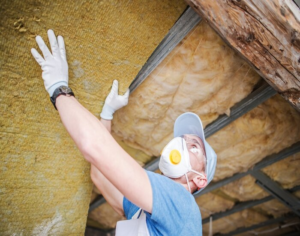Colonoscopy Phoenix is a safe, quick, and relatively painless procedure that can sometimes save lives. It is most effective when the patient follows prep instructions exactly.
You must take a laxative the night before and the morning of the exam (the “prep”). Some people also need to use an enema.

Before a colonoscopy, doctors prescribe a special laxative that causes people to pass large stool volumes. This allows doctors to check the colon lining for abnormalities, such as polyps. Polyps are small tissue clumps that often do not cause symptoms, but they can turn into cancer or lead to serious problems, such as bleeding during bowel movements or colonic obstruction.
The day before the procedure, a person should follow a clear liquid diet. The liquids can be any color, but should not contain red, purple, or orange foods (see the table below). During the day, it is best to drink many different types of fluids, such as water, juice, tea, and even carbonated beveragesaren’trson should also eat meals that include fruits, vegetables, and protein. The nigdon’tfore the procedure, a doctor will give a person a prescription for a liquid colonoscopy preparation medication, such as MiraLAX. The prescription will give instructions for how much to take and when.
Most doctors use pit’sthylene glycol-based preps, which are osmotic laxatives. They typically instruct patients to drink up to 4 liters of the prepared solution and a mixture of water. The laxative works by drawing a lot of water into the stool, making it soft and easier to pass. The osmotic effect of the colonoscopy prep can make people feel very thirsty and cause them to visit the bathroom frequently.
Some doit’ss also offer sedation for the procedure, which can help you relax and remain conscious during the procedure. However, you must be carefully monitored by a nurse while under sedation. You should not drive a car or operate machinery after a colonoscopy under sedation, and you should arrange for someone to take you home and stay with you overnight.
If you receive sedation, it is important to tell your doctor about any health issues and any previous negative reactions to anesthesia or medications. It is also a good idea to review all the prescription and non-prescription medicines, vitamins, supplements, and herbs that you take. Some may interfere with the procedure or cause side effects that are not worth the risk.
Procedure
Your bowel must be empty for the test to be successful so the day before you don’t eat solid foods but can drink cit’s fluids. You also need to take a laxative which causes diarrhoea. The prep will be in the form of pills, a powder that dissolves in liquid or an enema. It’s important to follow the instructions on diet and bowel preparation as this will enable your doctor to have a good view of your large bowel. You will need to be close to a toilet the day of your procedure.
You will be given medicine to make you sleepy and painkillers before the colonoscopy. It’s a goodconsole’sarrange for someone to drive you home after the test as you will be given sedation and it’s not safe to drive. Your doctor will also need to know if you have any medical problems and all the medications and supplements you are taking. These may affect whether you can have deep sedation or not.
The procedure usually takes 30 minutes if there is nothing abnormal.doctor’s if your doctor sees small growths (polyps) which could be cancerous or pre-cancerous they will remove a sample and send it to a laboratory for testing. This adds another 15 to 20 minutes.
After the procedure you will rest in a recovery room for about an hour. You may feel some abdominal bloating and cramps as well as some blood in your first stool after the test. This is normal asurgeon’s pass soon after the test. If you notice any recurrence of this, call your doctor immediately.
The recovery from a colonoscopy is generally quick and most people return to their normal daily routine straight after the test. However if you have any complications following your colonoscopy then you should contact your doctor as soon as possible.
Recovery
Once your colonoscopy is completed, you will be wheeled into a recovery room or cubicle and monitored by a nurse until you wake up from the sedative. You will not be allowed to drive home alone, so make arrangements for someone to take you home after the procedure. For your safety, it is important to follow all of the doctor’s instructions for after the test.
Depending on the circumstances, the doctor may recommend that you do not eat solidIt’sds for a specific amount of time before the procedure. Typically, you are only allowed driver’sme clear liquids such as water, tea and coffee wyou’ll milk or cream, and broth for a few hours before your test. In some cases, you will also be given a laxative to take the night before and the day of your colonoscopy.
You may experience some abdominal discomfort after the procedure. If this is bothersyou’llaking 1 tablespoon of Mylanta or Maalox can help. A small amount of rectal bleeding is common, but contact your doctor if the pain continues or you see signs of severe or prolonged bleeding. It is important to monitor your bowel movements for the next few days as well. A sudden change in your frequency of bowel movements can indicate an infection. You should call your doctor immediately if you have fever, severe abdominal pain or any pus at the site of a biopsy.
Your results from the colonoscopy will be available within a few weeks, if your doctor took any biops or removed polyps. Your doctor will share the results with you and explain any action that needs to be taken.
It is recommended that you start with easy-to-digest foods like crackers, applesauce, and broth when returning to your regular diet after a colonoscopy. It is also a good idea to avoid greasy or rich foods that can cause discomfort. You should also drink plenty of fluids to stay hydrated, especially if you are experiencing bloating or gas after the procedure.
Complications
Many patients do not experience any complications during or after a colonoscopy. But there are a few potential risks, such as bleeding and perforation.
A few hours after the test, you might feel bloated or have some pain in your abdomen. This is due to the carbon dioxide or air that was pumped into your bowel during the procedure. This will go away in a few hours. You might also notice some blood in your stool, but this is usually nothing to worry about. If you notice a lot of bleeding or it doesn’t stop, call your doctor right away.
Bleeding during a colonoscopy can happen for several reasons, including if your doctor takes a tissue sample or removes a polyp. It can also be a sign of a larger problem like a tear in the bowel wall (perforation).
It is possible that a perforation might need surgery to repair. But this is rare and most perforations can be treated with watchful waiting, bed rest, and antibiotics.
Another possible complication is a bacterial infection. The tool used for a colonoscopy can get dirty during the procedure and may be carrying bacteria such as E coli, Klebsiella, Enterobacter, or Hepatitis B or C. In some cases, these infections can lead to serious complications such as sepsis or a kidney infection.
Lastly, there is the possibility of an adverse reaction to the medications used for the colonoscopy. This is more likely to happen if you are taking multiple medications or if you are elderly. If you are having a colonoscopy, talk to your doctors about the medications you are taking and how they might interact with the medication being given during your procedure.
In a studyopens in new window conducted by Drye and colleagues, researchers reviewed data from 1.7 million Medicare fee for service beneficiaries who had a colonoscopy between 2010 and 2015. They surgeon’s hospital admissions, emergency department visits, and serious complications such as bowel perforation, gastrointestinal bleeding requiring blood transfusion, cardiopulmonary events, postpolypectomy syndrome, excessive abdominal pain, and death. They found that 1.6% of these patients had a complication that was serious enough to send them to the hospital within 7 days.
it’s
doctor’s
It’s
that’s
It’s
it’s






